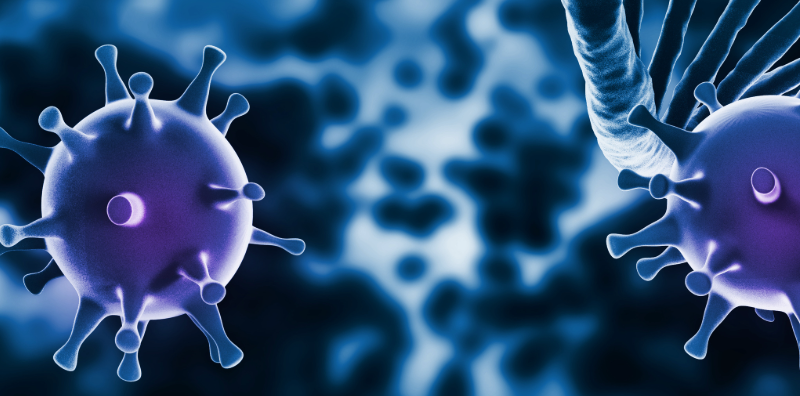Carbohydrates are often villainized as the culprit for our weight gain, but it’s more complex than this. It is constantly elevated hormone insulin levels that make you fat and keep you fat. Since carbohydrates cause a short-term increase in insulin levels, this has led to the carbohydrate-insulin theory of obesity or the idea that the solution to our growing obesity crisis is to cut out carbohydrates.
It’s not that simple. Insulin is a hormone that helps regulate the amount of glucose, a breakdown product of carbohydrates, in our blood required for optimal brain function as well as controlling enzyme activities, gene expression, and the distribution and storage of energy. Under normal metabolic conditions, insulin levels rapidly rise and rapidly fall in response to our intake of carbohydrates. This all changes as you develop insulin resistance.
With insulin resistance, insulin can tell our cells (primarily muscle) to quickly remove glucose from the blood. As a result, the higher levels of circulating glucose make the pancreas secrete higher and higher levels of insulin to accomplish the task. These constantly elevated insulin levels are a result of insulin resistance, which in turn is caused by increased cellular inflammation. So it is not insulin per se that makes you gain weight, but the constantly elevated levels of insulin caused by insulin resistance that is the problem.
How Insulin Resistance Makes You Fat
It is constantly elevated insulin levels that make you gain weight, and keep the weight on. The reason is that if the muscle cells are not taking in enough glucose from the blood, the increased insulin levels drive that glucose into the fat cells instead and that accelerates the storage of dietary excess calories as stored fat. This makes you gain weight. Furthermore, these increased insulin levels prevent your fat cells from releasing stored fat to be used as energy for the body. This keeps the weight on.
What Causes Insulin Resistance?
Several factors play a role in insulin resistance, but cellular inflammation is the biggest culprit. Cellular inflammation results from an imbalance of two key fatty acids in our blood, Arachidonic Acid (AA) and Eicosapentaenoic Acid (EPA). When the levels of arachidonic acid are in excess it leads to the generation of hormones known to be pro-inflammatory. This inflammation makes it difficult for insulin to communicate with our cells in the liver, muscle, and adipose tissue. To increase communication, more and more insulin is produced resulting in high circulating levels and with that comes the excess weight.
It is the dietary factors below that over the long term lead to increased cellular inflammation, making it more likely to become insulin resistant.
- An imbalance of protein to carbohydrate at each meal.
- Excess dietary caloric intake causing oxidative stress.
- Excess dietary intake of omega-6 fatty acids.
- Excess dietary intake of saturated fatty acids, especially palmitic acid.
- Lack of dietary intake of omega-3 fatty acids.
- Lack of dietary intake of polyphenols to activate anti-oxidative genes to reduce oxidative stress.
- Lack of dietary intake of polyphenols to promote gut health.
- Lack of dietary intake of fermentable fiber to promote gut health.
How to Tell If You Have Insulin Resistance
You can’t determine your level of insulin resistance by looking in the mirror as about 16% of healthy, normal-weight Americans have severe insulin resistance (1). However, if you have diabetes (30 million Americans) or pre-diabetes (86 million Americans), you are guaranteed to have severe insulin resistance. More than 80% of obese Americans have severe insulin resistance. This high prevalence of severe insulin resistance goes a long way to explaining our obesity epidemic. The higher your levels of insulin resistance, the more likely you are to gain excess body fat and have difficulty losing it. It also means that you are likely to regain all the lost body fat unless you reduce the underlying cause which is not carbohydrates, but insulin resistance that is caused by cellular inflammation (2).
Blood Tests for Insulin Resistance
There are blood tests to know whether you are insulin resistant. Measuring insulin levels can get expensive, yet the triglyceride (TG) to high-density lipoprotein cholesterol (HDL) ratio can be used as a surrogate marker for insulin resistance and is commonly performed in your routine blood work. Insulin resistance is typically associated with an increase in body fat, so it makes sense that the first place you can measure its start is in the liver. This is because the liver is where dietary fats are repackaged into lipoproteins which transport triglycerides and cholesterol to cells. When insulin resistance develops, triglyceride levels rise, HDL levels decrease, and LDL (low-density lipoprotein) becomes smaller and denser. If you’re one to avoid blood testing, we have developed a simple quiz to gauge whether you may be insulin resistant or on the road to becoming it. You can access our insulin resistance quiz here.
How the Zone Diet Can Help
The Zone Diet was developed to help control insulin levels in the body. This is achieved by balancing the protein-to-carbohydrate ratio at each meal coupled with the use of small amounts of monounsaturated fats known to be anti-inflammatory. Since diet is one of the main reasons we develop insulin resistance, it’s also one of the easiest changes we can make to help reverse it. Within 4 days of following the Zone Diet, it has been shown clinically to reduce insulin resistance (3). With our new Zone Foods, we’ve tried to make it even easier for individuals to stick to the Zone eating plan with minimal thinking to help reverse insulin resistance quicker. Using the Zone Foods (e.g. Zone Cereal and PastaRx) at every meal has been clinically show to decrease insulin resistance 24 times more effectively than using their gluten-free equivalents (4).
Summary
- Constantly elevated levels of the hormone insulin can make it difficult to lose body fat.
- High insulin levels are a result of insulin resistance, which in turn is caused by increased cellular inflammation.
- Insulin resistance can be reversed within 4 days of following the Zone Diet.
As we age it becomes more and more difficult to lose excess body fat due to insulin resistance and increased levels of cellular inflammation. By bringing the focus back to choosing the right foods and ensuring the appropriate balance of protein to carbohydrate at each every meal along with adequate intake of omega-3 fatty acids and polyphenols we can keep insulin levels in check and keep us on the path to continued wellness.
References
- McLaughlin T, Allison G, Abbasi F, Lamendola C, and Reaven G. “Prevalence of insulin resistance and associated cardiovascular disease risk factors among normal weight, overweight, and obese individuals.” Metabolism 53:495-499 (2004)
- Sears B and Perry M. “The role of fatty acids in insulin resistance.” Lipids Health Disease 14:121 (2015)
- Markovic TP, Jenkins AB, Campbell LV, Furler SM, Kraegen EW, and Chisholm DJ. “The determinants of glycemic responses to diet restriction and weight loss in obesity and NIDDM.” Diabetes Care 21:687-694 (1998)
- Johnson CS, Sears B, Perry M, and Knurick JR. “Use of novel high-protein functional food products as part of a calorie-restricted diet to reduce insulin resistance and increase lean body mass in adults: A randomized controlled trial.” Nutrients 9:1182 (2017)






